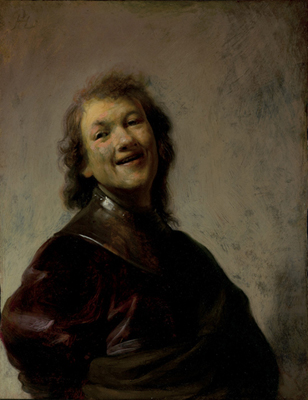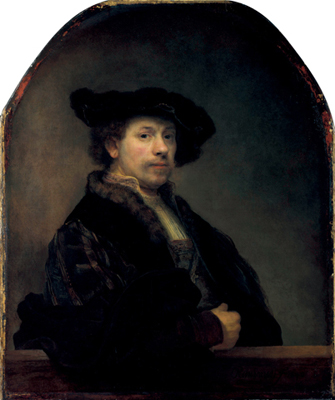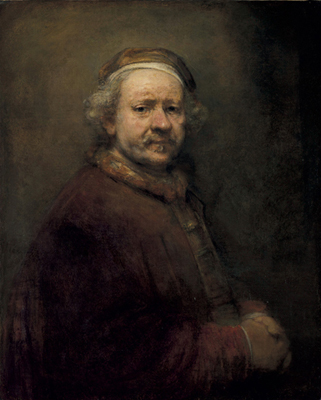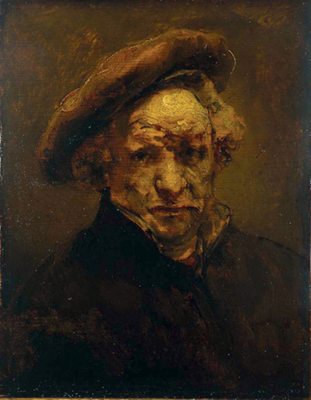
As most of the movements of expression must have been gradually acquired, afterwards becoming instinctive, there seems to be some degree of a priori probability that their recognition would likewise have become instinctive.
—Charles Darwin, The Expression of the Emotions in Man and Animals
He notices the blue or red of a child’s frock; the way a horse shifts its tail; the sound of a cough; the action of a man trying to put his hands into pockets that have been sewn up. And what his infallible eye reports of a cough or a trick of the hands his infallible brain refers to something hidden in the character, so that we know his people, not only by the way they love and their views on politics and the immortality of the soul, but also by the way they sneeze and choke.
—Virginia Woolf, on Tolstoy: “The Russian Point of View” in The Common Reader
Intuitive first impressions of people we meet are often helpful clues. We are not Tolstoy, and Virginia Woolf consciously exaggerated in calling even his brain infallible. But we have layers of interpretation behind our intuitive understanding of people. Our brains, like Tolstoy’s, can refer a trick of the hands to something hidden in the character.
Talking to children about how to write poems about people, Ted Hughes spoke of these first impressions, “which we cannot pin down by more than a tentative, vague phrase. That little phrase is like the visible moving fin of a great fish in a dark pool.”1 Where do these first impressions come from? How can they sometimes give us a revealing glimpse of the fish in the pool?
First impressions often start with what we think we see in someone’s face. Babies look at faces more than other things. Even among drawings, they look more at ones that are like faces.2 We all know the role of the face in recognizing people. Prosopagnosia, in which certain brain lesions disrupt recognition of faces, helps us map the neurological basis of this recognition. Faces also help us “read” people. The processing networks used in recognition are different from those involved in seeing in their faces what people are like, or what they are thinking and feeling.3
If human interpretation is important for psychiatry, reading faces must also be. Someone I know with Asperger’s syndrome is unusually good at understanding autistic people. I once asked her what it was that she was able to intuit about them that the rest of us fail to see. She said that people with autism or Asperger’s syndrome often cannot read people’s faces: “Imagine how your world would change if people had no faces.”
In faces we get glimpses of minds: both of present thoughts and feelings and, more generally, of character and personality. But notoriously, people can put on an act. A deceptive face is often important. Duncan, lamenting his betrayal by the Thane of Cawdor, says, “There’s no art / To find the mind’s construction in the face. / He was a gentleman on whom I built / An absolute trust.” A note of skepticism about our interpretations is right. How far do we really see character in faces and how far do we project it onto them? Marcel Proust’s narrator, obviously reflecting the author, notices the complexity even of recognizing another’s face. He adopts a skeptical view of interpretation as being mainly projection:
Even the simple act that we describe as “seeing someone we know” is to some extent an intellectual process. We pack the physical outline of the person we see with all the notions we have already formed about him, and in the total picture of him which we compose in our minds those notions have certainly the principal place. In the end they come to fill out so completely the curve of his cheeks, to follow so exactly the line of his nose, they blend so harmoniously in the sound of his voice as if it were no more than a transparent envelope, that each time we see the face or hear the voice, it is these notions which we recognise and to which we listen.4
Obviously some interpretations of faces are highly loaded with the projections of our own preconceived ideas. Hostile facial caricature is part of the history of racism. And sometimes we may be misled, as Duncan was, by a generous interpretation. There are questions for psychology. How often and how far do readings of faces get someone right? How far are they Proustian projection?
You say to the group, “Someone here must have been reading my private letters.” One person blushes. It is not proof, but perhaps it is worth following up? Blushing is a crude indicator, signaling only current feelings of guilt, shame, embarrassment, or sexual response. There are more subtle indicators of long-term attitudes and character. Perhaps it is too strong to say that there is no art to find the mind’s construction in the face. How far are some people more acute than others in their readings? If there are people whose interpretations are more accurate and perceptive, are their skills teachable?
As a source of information, reading faces is like memory, which we also rely on heavily. We all know that memory is highly fallible. We repress, we forget, we misremember, we distort. But we could not survive the obliteration of the past entailed by total skepticism about memory. We have to trust memory, and although it lets us down at the margins, mainly it rewards our trust. Psychology may show how far reading faces can or cannot compete with memory for rough general reliability. In advance of that, there are reasons for modest optimism, some coming from the way painters have created ways of representing what they have seen in people’s faces.
Rembrandt was 22 in 1628. Around then he painted the self-portrait you see in Figure 8.1. It depicts a young man, at that moment carefree and laughing. The portrait, which must have taken days or weeks to paint, manages to capture a movement of face and head that probably lasted a second or two. If you know it is a self-portrait, you know he was a gifted painter. But otherwise it tells you little more about him than this wonderful carefree moment.
Now look at his self-portrait from 1640, when he was 34, and try to “read” what is expressed in the face (Figure 8.2). The well-dressed man looking at us has an alert, penetrating gaze, a look of intelligence, with a touch of overconfidence, perhaps even arrogance. This man in his mid-thirties might be a good deal less approachable than the laughing young man of twelve years earlier. He does not look like someone who would meekly accept criticism without demur: he has the air of someone well aware of being exceptionally good at what he does. Of course, if you paint as well as this, if you are Rembrandt, it can be said to be justified confidence rather than overconfidence.

Figure 8.1: Rembrandt Laughing. J. Paul Getty Museum. Digital image courtesy of the Getty’s Open Content Program.
Now read the face in his self-portrait when he was 63, which he painted in 1669, the year he died (Figure 8.3). It is plausibly the aged face of the younger man in the laughing, youthful portrait. This face records the physical changes of aging: the grey or white hair, the lines, the less firm contours. But it also seems to record psychological changes. The touch of overconfidence or arrogance in the 1640 portrait is no longer visible. And there is perhaps a hint of the sadness of an old man who has seen deeper into life.

Figure 8.2: Rembrandt, Self Portrait at the Age of 34, 1640. London, National Gallery. Oil on canvas. Copyright © 2012, The National Gallery, London/Scala, Florence.
My hope is that what many people see in these faces to some extent overlaps with these readings. If we do not overlap, the overconfidence may be mine. But if most of us broadly converge in interpretation, perhaps what we “see” in the faces is there to be seen, and is not just something we project on to them.
Even with a fair degree of overlap, there are questions about our shared interpretations. Some of Rembrandt’s self-portraits have been called self-conscious poses to depict a particular emotion. The paintings above do not seem like that. The last one especially seems a very honest “warts and all” portrait. It comes across as one that, by avoiding poses or prettification, captures something deep. Even if we agree about this, we could still be wrong. It could be that Rembrandt used his imagination to paint a variation on how his face actually looked, expressing states not really his. There is no special reason to accept this (perhaps implausible) “insincerity” hypothesis. But those of us who are not painters may underrate the degree of art in an apparently straightforward depiction.

Figure 8.3: Rembrandt, Self Portrait at the Age of 63, 1669. London, National Gallery. Oil on canvas. Copyright © 2012, The National Gallery, London/Scala, Florence.
Francis Bacon was interested in how other painters, quite early on, might make on the canvas some random mark that could become important in the final painting. He thought this had happened in another of Rembrandt’s self-portraits. In an interview with Bacon, David Sylvester said, “The thing that’s difficult to understand is how it is that marks of the brush and the movement of paint on canvas can speak so directly to us.” Bacon replied:
Well, if you think of the great Rembrandt self-portrait in Aix-en-Provence [see Figure 8.4] … you will see that there are hardly any sockets to the eyes, that it is almost completely anti-illustrational. I think that the mystery of fact is conveyed by an image being made out of non-rational marks … But what can happen sometimes, as it happened in this Rembrandt self-portrait, is that there is a coagulation of non-representational marks which have led to making up this very great image. Well, of course, only part of this is accidental. Behind all that is Rembrandt’s profound sensibility, which was able to hold onto one irrational mark rather than onto another.5

Figure 8.4: Rembrandt, Self Portrait, 1659. Copyright © Granet Museum. CPA. Photo by Bernard Terlay.
The point of interest here is the nonaccidental part. Rembrandt’s “profound sensibility,” telling him to hold on to one accidental mark and not another, was linked to the shared human grammar of facial interpretation. This grammar may partly reflect the instinctive interpretation Darwin thought was probable. We also know it from shared experience, seeing how faces change when people are absorbed, or in anger, love, pride, or grief.
A representational painting is intended to convey a recognizable interpretation of what is depicted. Someone who sees a face seeming to express some of the person’s inner life, and who paints that face, intends others to recognize the expressiveness. A portrait painter detects the subject’s character or emotional state partly by visual clues and conveys the psychological features by reproducing these same clues. The painter conveys the expressiveness of the face because people who see the painting share the grammar of interpretation. There are extra layers of resonance when we move from a random portrait to a self-portrait by Rembrandt. We are looking at an extremely perceptive man, portrayed by a brilliant painter who knows him from the inside.
Obviously the painter’s brilliance creates the powerful recognition these self-portraits arouse. But the shared intuitive grammar of reading faces is also essential. We live among people with faces. And each of us has our own face. Often we recognize an expression because we have felt it on our own face, as well as seen it on others. We know the embarrassment or boredom behind it. Because of this shared experience and knowledge, we intentionally and unintentionally communicate with each other by means of faces all the time. Martians with a different grammar (or none) would be left cold even by Rembrandt’s portraits.
The neuropsychological systems by which we read faces are just a fraction of the vast array of systems by which we detect and interpret things and events in the world. The visual systems by which light impinging on the retina is interpreted as color, shape, and movement are complicated enough. But we also interpret what we see as objects, and as ones we can, say, use. We go further still in recognizing a face and then seeing in its expression boredom or embarrassment. And these are just some of the systems involved in visual detection and interpretation, without starting on the subtleties of interpreting what we hear, feel, taste, or smell.
Half hidden in the depths of the English countryside are various outposts of the signal and communication detection system that feeds information to the American and British intelligence services. To anyone not knowing what they are, they look a bit strange, usually like a set of giant golf balls or huge television satellite dishes. On the outside they give little clue to the fact that inside they are bristling with the technology of detection and interpretation. The word “jihad” in a phone conversation in Bradford or in Bahrain may alert some computer in the Government Communications Headquarters in Cheltenham. The smooth exterior of the human body similarly gives little clue to the way we too are bristling with a naturally evolved neurotechnology of detection and interpretation. Our interpretations are not always right. GCHQ’s probably are not always right either. But in each case powerful systems for interpretation have been developed.
Our own systems emerged during our evolution. One classical philosophical problem is whether there is any reason to expect our senses to be generally reliable rather than deceptive. One possible answer is that a species whose senses were systematically misleading about the world would probably be eaten by some other species. Similar claims can be made about the evolutionary usefulness during the Stone Age (or now) of being able to see either friendship or hostility in another person’s face.
Explaining features of human psychology by their usefulness at some stage of evolution is open to a familiar skeptical question. How do we distinguish a well-supported explanation from speculation—an ad hoc “just-so story”? It is not clear that there is any general answer, apart from looking at the kind of evidence available in each case. All the same, keeping the just-so story question as a reminder about caution here, the evolutionary support for the reliability of our senses seems highly plausible. And because reading faces also provides information that is likely to be useful to survival, some parallel between the two arguments seems to hold.